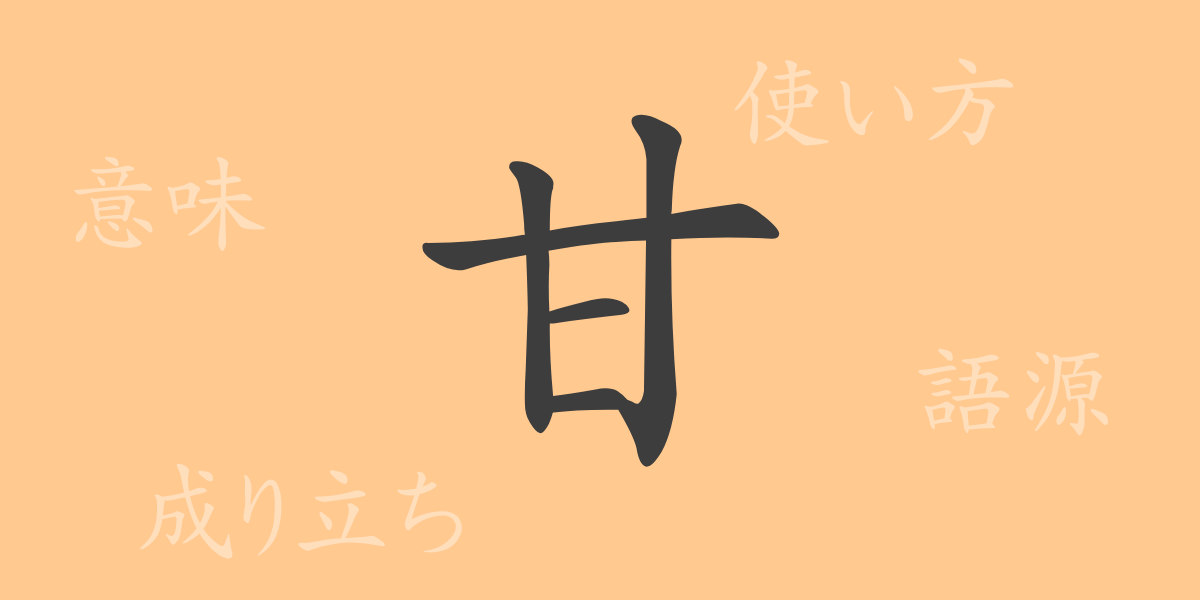The beauty of the Japanese language is evident in its characters. The commonly used Kanji in Japan, in particular, have captivated many with their intricate forms and profound meanings. “甘” (Ama) is one such Kanji, representing concepts closely related to our everyday life. In this article, we explore the allure of “甘” (Ama), from its etymology to its meaning, usage, and even its appearance in idioms and set phrases.
Origins of 甘 (Ama)
“甘” (Ama) was created as an ideogram in ancient China to represent the sweet taste. It combines the character for mouth, “口” (Kuchi), with the symbol for sweetness, “甘” (Ama), to depict the sensation of tasting something sweet. This character was then adopted into Japanese, where it is used to express the concept of “sweetness” or “あまい” (Amai).
Meaning and Usage of 甘 (Ama)
“甘” (Ama), read as “あまい” (Ama-i), primarily denotes the sweet taste but also has many metaphorical uses. For example, “甘い言葉” (Ama-i -Kotoba) refers not to a literal sweet taste but to words that are comforting and seductive. Similarly, “甘い考え” (Ama-i -Kanga-e) is used to point out an optimistic thought that does not confront reality.
How to Read 甘 (Ama), Stroke Count, and Radical
Basic information about the Kanji “甘” (Ama) is as follows:
- Readings: The on’yomi (Sino-Japanese reading) is “かん” (Kan), and the kun’yomi (native Japanese readings) are “あまい” (Ama-i), “あま-” (Ama-), “あま.える” (Ama-eru), “うまい” (Umai)
- Stroke Count: A total of 5 strokes
- Radical: 甘 (Amahenn) (Amahen)
Idioms, Set Phrases, and Proverbs Using 甘 (Ama) and Their Meanings
Idioms, set phrases, and proverbs that include “甘” (Ama) are diverse in the Japanese language. For instance, “甘口” (Amakuchi) refers to food or beverages that are less spicy or sour, and “甘える” (Ama-eru) means to rely on someone’s kindness. In proverbs, “甘言を吐く” (Amagen-wo -Ha-ku) denotes the act of speaking sweet, seductive words to entice someone.
Conclusion on 甘 (Ama)
Each Kanji character carries with it a long history and deep meaning. “甘” (Ama) is no exception, and it is used in various ways in our lives. As a commonly used Kanji in Japan, “甘” (Ama) enables rich expressions not only of sweet taste but also of human emotions and behaviors. It is our hope that through this article, you have come to appreciate the multifaceted charm of “甘” (Ama).

























